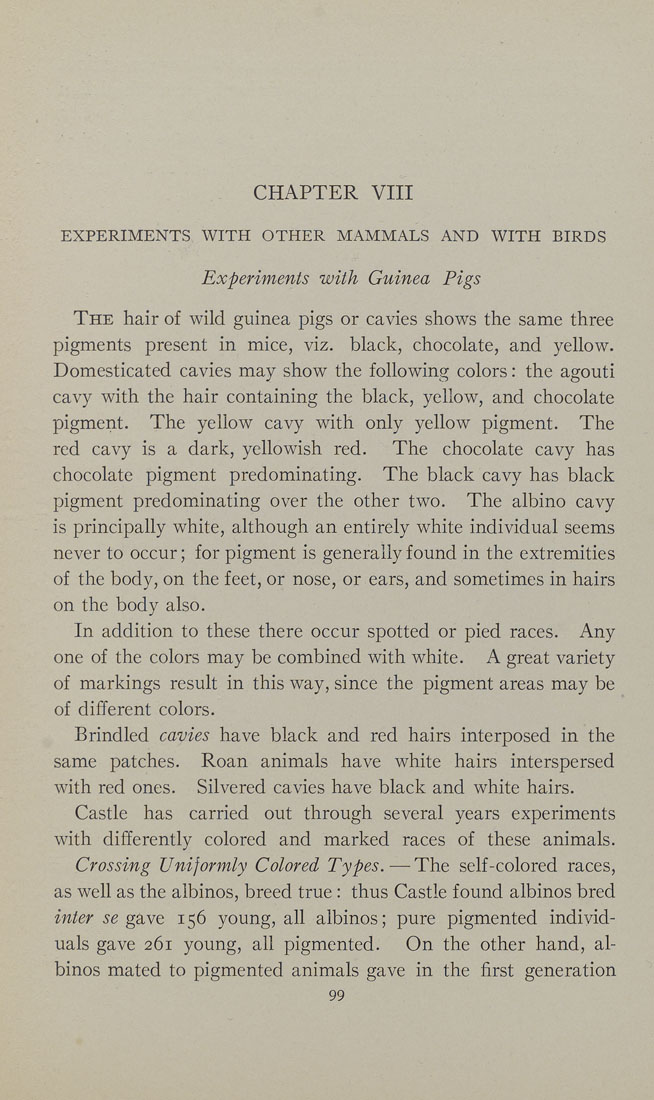CHAPTER VIII
EXPERIMENTS WITH OTHER MAMMALS AND WITH BIRDS
Experiments with Guinea Pigs
The hair of wild guinea pigs or cavies shows the same three
pigments present in mice, viz. black, chocolate, and yellow.
Domesticated cavies may show the following colors: the agouti
cavy with the hair containing the black, yellow, and chocolate
pigment. The yellow cavy with only yellow pigment. The
red cavy is a dark, yellowish red. The chocolate cavy has
chocolate pigment predominating. The black cavy has black
pigment predominating over the other two. The albino cavy
is principally white, although an entirely white individual seems
never to occur; for pigment is generally found in the extremities
of the body, on the feet, or nose, or ears, and sometimes in hairs
on the body also.
In addition to these there occur spotted or pied races. Any
one of the colors may be combined with white. A great variety
of markings result in this way, since the pigment areas may be
of different colors.
Brindled cavies have black and red hairs interposed in the
same patches. Roan animals have white hairs interspersed
with red ones. Silvered cavies have black and white hairs.
Castle has carried out through several years experiments
with differently colored and marked races of these animals.
Crossing Uniformly Colored Types. — The self-colored races,
as well as the albinos, breed true: thus Castle found albinos bred
inter se gave 156 young, all albinos; pure pigmented individ¬
uals gave 261 young, all pigmented. On the other hand, al¬
binos mated to pigmented animals gave in the first generation
99
|








